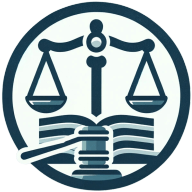How Do You Approach Drafting Legal Documents?
Navigating the complexities of legal document drafting requires both art and expertise. This article demystifies the process, offering valuable perspectives from seasoned legal professionals that ensure enforceability, precision, and clarity. Discover strategies that prioritize client understanding without sacrificing legal thoroughness.
- Use Templates for Enforceability
- Draft with Clarity and Sensitivity
- Focus on Clarity and Precision
- Use Plain Language
- Prioritize Clarity and Simplicity
- Create Comprehensive Parenting Plans
- Simplify Language for Clarity
- Simplify Legal Jargon
- Client-Centric Legal Document Drafting
- Understand Laws and Tailor Documents
- Collaborate with Clients for Precision
- Showcase Legal Expertise and Collaboration
- Active Collaboration for Client Intent
- Build Comprehensive Client Narratives
- Prioritize Client Clarity Over Legal Tradition
- Balance Plain English and Technical Terms
- Use Plain Language and Precise Definitions
- Collaborate Closely with Real Estate Lawyers
Use Templates for Enforceability
To ensure enforceability when drafting legal documents, I start by using templates that have been enforced in the past. I identify points of potential liability and use provisions from the templates to protect the client. For example, when drafting a Stock Purchase Agreement for a business that has employees, I utilize representations and warranties from templates to address issues like potential employee claims, worker's compensation, ERISA, etc.
To ensure clarity and brevity, I create defined terms for items that are addressed more than once, and which always need text to explain what the item is or how it differs from other similar items. For example, many agreements have multiple provisions that require one party to give notice to another party, such as for breach or indemnification. These notices often have different time requirements and different trigger events. Instead of describing the notice by referring to its timeline and trigger, I define the notice once (e.g. "Breach Notice") and use the defined term thereafter. This reduces the amount of text required and is a clear reference to a specific circumstance.

Draft with Clarity and Sensitivity
As a sexual abuse attorney, I approach drafting legal documents with a focus on clarity, sensitivity, and the pursuit of justice. Survivors often rely on these documents to give voice to their experiences, so ensuring they are both enforceable and impactful is vital. For example, I recently drafted a complaint in a Title IX case that detailed a university's systemic failure to address a culture of indifference toward sexual misconduct. By weaving in clear legal arguments with the survivor's story, I was able to highlight the institution's accountability while respecting the survivor's dignity. This led to meaningful settlement negotiations and policy changes at the university. Drafting such documents requires balancing legal precision with compassion, which is the cornerstone of advocating for survivors.

Focus on Clarity and Precision
When drafting legal documents, I approach the process with a focus on clarity, precision, and practicality. Employment agreements, workplace policies, and severance packages must not only comply with the law but also be easy for both employers and employees to understand. Overly complex legal jargon can create confusion and, ultimately, lead to disputes. My goal is to craft documents that are both enforceable and clear, leaving no room for misinterpretation or ambiguity.
One document I'm particularly proud of is a comprehensive severance agreement I drafted for a client facing a challenging layoff situation. The client wanted to ensure that the process was handled fairly, professionally, and in a way that protected both their legal interests and their reputation. I took the time to craft an agreement that clearly outlined the terms of separation, including non-compete clauses, confidentiality, and a mutual release of claims, while also including language that demonstrated empathy toward the affected employees. By providing clear explanations of the terms and ensuring employees understood their rights, we avoided potential litigation and helped the client maintain positive relationships with former staff. The feedback from both the employer and employees highlighted how clear, fair documents can make difficult transitions smoother for everyone involved.

Use Plain Language
I use plain language while writing a legal document to state the parties' responsibilities and rights. Every document starts with defined terms, then specific duties and consequences, and no legalese.
One document I'm particularly proud of was a plea agreement I wrote while at Premier Criminal Defense. It outlined the terms of the plea, the defendant's obligations, consequences of violation and timelines for completion of requirements. I broke it up into short paragraphs with numbered sections for easy reference. I included plain language explanations alongside the legal terms so my clients would understand what they were committing to.
It proved itself when a dispute arose over program completion dates. Because the document was specific on the timeline and requirements- we were able to resolve the issue without going to court. The judge even commented on how clear the document was and it became a template for other attorneys in my firm.
The key to this document's effectiveness was its organization, plain language and attention to potential areas of dispute. This approach to document drafting served me well throughout my career- from complex federal cases to routine misdemeanors.

Prioritize Clarity and Simplicity
When drafting legal documents, I prioritize clarity, simplicity, and precision. Legal documents should leave no room for misinterpretation, especially when dealing with personal injury claims where a client's future well-being is on the line. My goal is to draft legal documents that are both legally sound and easily understood by my clients. I believe in using clear, concise language that avoids legal jargon wherever possible, while carefully addressing potential challenges or loopholes to protect my clients' interests. One document I'm particularly proud of is a settlement agreement I drafted for a client who suffered significant injuries in a workplace accident. The opposing party attempted to include vague terms that could have hurt my client down the road. To avoid this, I meticulously revised the document to include specific protections, ensuring my client was fully safeguarded. The final agreement clearly defined everyone's roles and responsibilities, leaving no room for confusion or misinterpretation. This document gave my client peace of mind, knowing that their rights were protected both now and in the future.

Create Comprehensive Parenting Plans
Family law matters often involve heightened emotions and long-term implications, so it's important that the documents are legally sound and written in language that is accessible to all parties involved. My goal is to create documents that leave no room for misinterpretation while fostering cooperation and minimizing future disputes. Our team put together a comprehensive parenting plan for a high-conflict custody case where the parents were struggling to communicate effectively, which made outlining precise terms essential. I worked closely with my client to understand their concerns and priorities, then incorporated detailed provisions regarding parenting time, holiday schedules, decision-making responsibilities, and communication protocols. To prevent ambiguity, I used plain language, included specific examples of potential scenarios, and outlined steps for resolving disputes through mediation before resorting to litigation. This helped both parents transition to a more structured and cooperative co-parenting dynamic. The clarity and thoroughness of the document ensured that both parties understood their responsibilities, reducing conflict and providing stability for the children involved. For family law professionals, my advice is to focus on the practical implementation of the agreements you draft. Think about how the terms will work in real-life situations and address potential points of contention proactively to ensure the document serves its purpose effectively.

Simplify Language for Clarity
I start by focusing on simplicity, avoiding overly technical or ambiguous language. Each clause is structured to cover every foreseeable scenario comprehensively and logically. Using plain language ensures clients and opposing parties easily understand their obligations. Clarity reduces disputes, making the document enforceable and minimizing potential challenges in court.
I once drafted a settlement agreement for a catastrophic accident claim. It included comprehensive medical provisions, future financial support, and clear dispute resolution mechanisms. This ensured our client received full compensation with no room for ambiguity. Seeing the client's peace of mind made it one of my proudest achievements.

Simplify Legal Jargon
I aim to simplify legal jargon while maintaining precision to ensure the document is easily understood by both the court and my client. For example, I drafted a complex motion to suppress evidence based on an unconstitutional search. I made sure to clearly outline the relevant facts, cite applicable case law, and tie each argument back to constitutional principles. The court granted the motion, resulting in the dismissal of the charges against my client. This reinforced the importance of being both thorough and accessible in legal writing.

Client-Centric Legal Document Drafting
At our firm, we approach legal document drafting with a client-centric focus, prioritizing clarity, precision, and compelling advocacy. Whether it's a demand letter, a settlement agreement, or a case brief, our goal is to ensure the language is clear, concise, and persuasive. We achieve this by employing plain English, structuring documents logically, and meticulously citing relevant statutes and case law to support every argument.
One particularly successful example is a demand letter we crafted for a client who suffered significant injuries in a car accident. We meticulously structured the letter to tell their story powerfully, presenting detailed medical evidence, expert opinions, and a clear calculation of damages, including future care costs and lost earning capacity. The clarity and compelling presentation of the client's case immediately impressed the insurance company, resulting in a substantial settlement without the need for litigation. This experience underscores the importance of well-crafted legal documents. I advise fellow legal professionals to treat each document as a reflection of their professionalism, prioritizing clarity, avoiding unnecessary legal jargon, and always considering the audience who will be reading it.
Understand Laws and Tailor Documents
My process involves a deep understanding of the applicable laws and tailoring the document to the specific circumstances of the case. A memorable example was a sentencing memorandum I prepared for a client facing significant prison time. By presenting a compelling narrative supported by clear legal arguments and evidence of mitigating factors, I was able to persuade the court to impose a sentence far below the guidelines. This experience highlighted the power of crafting documents that are not only legally sound but also humanizes the client's story in a way that resonates with the court.

Collaborate with Clients for Precision
I prioritize understanding the client's unique needs before drafting anything concrete. Tailoring each document ensures it reflects their goals while meeting legal standards. I incorporate defined terms and precise formatting for absolute clarity and consistency. This structured approach makes the document clear, enforceable, and aligned with the client's objectives.
A slip-and-fall liability waiver I drafted for a major retail client stands out. It balanced legal protection with accessibility, ensuring customers clearly understood its terms. The document reduced litigation risks significantly while maintaining a customer-friendly tone. It's a proud example of blending enforceability with practical, human-centered communication.
Showcase Legal Expertise and Collaboration
I view drafting legal documents as an opportunity to showcase both our legal expertise and our commitment to achieving the best outcomes for our clients. For me, the key to ensuring clarity and enforceability lies in collaboration and a meticulous review process. Every document we produce is a reflection of our firm's reputation, so it's essential that it's not only legally sound but also straightforward and compelling. One document I'm particularly proud of was a comprehensive service agreement we created for a corporate client undergoing rapid growth. Their concern was ensuring the agreement would protect their interests while remaining accessible to their diverse client base. Working with our team, we tailored the document to include clear language, visual aids like tables for complex terms, and practical examples of scenarios that could arise. At the same time, we made sure it adhered to all relevant laws and regulations, providing robust protection against potential disputes. This process was impactful because it wasn't just about drafting a legally binding document; it was about understanding our client's business model and their need to build trust with their clients. By focusing on clarity, enforceability, and alignment with the client's goals, we delivered a document that strengthened their relationships and safeguarded their operations. For other leaders, my advice is to involve your team in the drafting process, leverage diverse perspectives, and always keep the end user in mind. The goal is to create documents that not only serve their legal purpose but also contribute to the client's success.

Active Collaboration for Client Intent
I rely on active collaboration with clients to capture their true intent. Drafting starts with outlining the main objectives before layering in legal precision. Short sentences, active voice, and clear definitions are my go-to techniques. The result is an enforceable document that's accessible to all parties involved. A meticulously crafted demand letter in an institutional abuse case made a mark. It combined compelling factual narratives with strong legal arguments, demanding swift action. The letter's clarity and precision led to a favorable out-of-court settlement. It’s proof of how powerful well-crafted documents can be in achieving justice.
Build Comprehensive Client Narratives
My approach to drafting demand letters begins with building a comprehensive narrative of the client's experience, detailing their injuries and the impact those injuries have had on their daily life, work, and overall well-being. A key part of this process is gathering and organizing thorough documentation, including medical records, treatment plans, and expert opinions, to substantiate the claims of injury and their extent. I also meticulously compile evidence of liability, such as police reports, witness statements, and photographs or videos from the accident scene, ensuring that the facts are presented in a logical, undeniable sequence.
I had a client who was injured in a car accident where the insurance company initially denied liability, claiming my client was partially at fault. To counter this, I carefully outlined the facts in the demand letter, presenting an irrefutable timeline of events supported by hard evidence. I cited specific legal precedents and statutes relevant to the jurisdiction, reinforcing why the insurer's denial was unfounded. Additionally, I provided a detailed breakdown of the damages, including medical expenses, lost wages, pain and suffering, and anticipated future costs related to the injuries.
What set this demand letter apart was its clarity and precision. I avoided overly technical jargon, making the document easy to understand while maintaining its legal rigor. Each section flowed logically, eliminating any potential confusion or ambiguity. The result? The insurance company reevaluated its position and offered a settlement significantly higher than their original denial would have suggested.
Prioritize Client Clarity Over Legal Tradition
I take as my starting point that clarity to clients, rather than ritual reference to legal tradition, is the most important thing. In other words, I use no legalese, and I write everything in plain English.
Traditionally, legalese has allowed attorneys to charge high fees. If a lawyer says they have to write in an obscure style that no one else but other specialists can understand, it gives them a rationale for high fees. The fact that the obscurity and lack of clarity of the language leads to more confusion among clients, their attorneys, and opposing counsel simply allows attorneys to bill more hours. So, there is an economic interest for attorneys to draft documents in a way that sounds like a Greek orator speaking Middle English.
The only legalese--"merge" and "survive"--that I use in my divorce agreements is explicitly required by the courts. And when I use these terms, as I am required to, I immediately follow them with plain language explanations of what they mean:
"This Separation Agreement shall be incorporated and merged in the Divorce Judgment, and it shall not survive as an independent contract. We understand this means we may ask the Court to modify much of this Agreement if we have a significant change of circumstances, but that our property and debt division in Section 2 is final and unlikely to be changed by the Court."
and
"This Separation Agreement shall be incorporated, but not merged in the Divorce Judgment, and it shall survive as an independent contract. We understand this means that all the terms of the Agreement are final and unlikely to be changed by the Court at a later date."
Balance Plain English and Technical Terms
To draft clear and enforceable legal documents you need to strike a balance between plain English that non-lawyers easily understand versus technical terminology that precisely described the deal. The problem with doing too much plain English is that although it is understandable it is not precise. Technical, harder to understand language is more precise and thus increases the likelihood that the contract will be enforced as intended without dispute. As a lawyer I strike a balance to ensure that clients, courts, opposing parties, and other stakeholders interpret the contract in a way that benefits my client.

Use Plain Language and Precise Definitions
I focus on plain language, logical structure, and precise definitions when drafting legal documents. Each section addresses a single topic, avoiding ambiguity by defining key terms upfront and using consistent phrasing throughout. For example, I drafted a commercial lease agreement that clearly outlined maintenance responsibilities, minimizing disputes between landlord and tenant. By using bullet points for obligations and cross-referencing relevant clauses, it was both user-friendly and airtight. A clear document isn’t just easier to understand—it reduces misunderstandings and ensures enforceability if challenged. Simplicity and specificity are the foundations of an effective legal draft.

Collaborate Closely with Real Estate Lawyers
I collaborate closely with real estate lawyers to ensure every term is clearly defined and that the document aligns with both the client's needs and local regulations when working on legal documents related to real estate transactions. This involves reviewing contracts line by line to eliminate ambiguities, which reduces the risk of disputes down the line.
I helped a client finalize a sale contract for an international property purchase. The client was unfamiliar with Australian laws, so I worked with their lawyer to include detailed conditions around deposit payments, settlement timelines, and currency exchange contingencies. We also added a clause allowing flexibility if unforeseen regulatory delays occurred.







